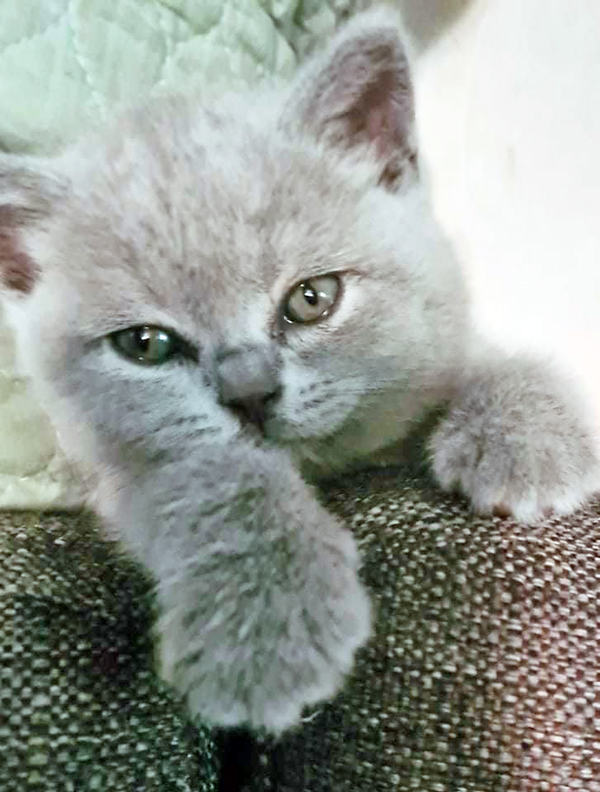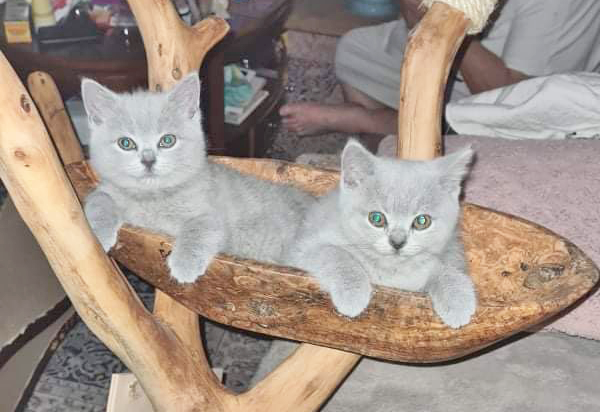

British Shorthair


British Shorthair is also called the "Brite" or very often is's nickname is "the Tedy cat" due to the big round and very soft look. It's the national cat of England and has been breed for more than 100 years.
The British Shorthair is a relatively powerful-looking large cat, having a broad chest, strong thick-set legs with rounded paws and a medium-length, blunt-tipped tail. The head is relatively large and rounded, with a short muzzle, broad cheeks (most noticeable in mature males, who tend to develop prominent jowls) and large round eyes that are deep coppery orange in the British Blue and otherwise vary in colour depending on the coat. Their large ears are broad and widely set. Typically they live for about 14 to 20 years. The male weight betwen 5 to 10 kilos and the female "only" between 4 to 6 kilos.
Although the British Blue remains the most familiar variant, British Shorthairs have been developed in many other colours and patterns. Black, blue, white, purple, red, cream, silver, golden and—most recently—cinnamon and fawn are accepted by all official standards.
More than one hundred colors and patterns are accepted.
Our cats are blue and purple.
They are an easygoing and dignified breed, not as active and playful as many, but sweet-natured and devoted to their owners, making them a favourite of animal trainers. They tend to be safe around other pets and children since they will tolerate a fair amount of physical interaction, but as a rule do not like to be picked up or carried. They require only minimal grooming and take well to being kept as indoor-only cats; however, they can be prone to obesity unless care is taken with their diet.[4]
[12] They are quiet and vigilant, but if they trust their owners, they will silently follow the owners’ activities and stay with them. British Shorthair cats are not lap cats. They are more accustomed to staying beside people than squatting on people’s laps. Similarly, they prefer the feeling of having their feet on the ground. They have low voice and a moderate activity level. When there is no one at home, they will stay at home quietly and wait for their owners to come back.
Kilde: Wikipedia

My husband Tommy and I live in a small village in the western part of Denmark very close the the North Sea. We have been married since 1999 and I was the one who brought the cats into our life, when we first met. Luckily Tommy is also very happy for cats and pets in general.
We have a nice garden of 700 m2. It has a 2 meter high fence with electric wire on top all the way around, so the cats have a lot of space outside as well. The cats can freely run in and out, which they enjoy. I have breed cats since 1990. It started with "Mimmi", a white Persian cat, "Balder", a red Persian cat and "Asterix", a Norwegian forest cat.
A good friend of mine living i Aalborg was breeding British Shorthair, and I was completely in love after a short visit.
Here I met "Gizmo", who became our first British Shorthair cat in 2009.
When my two Persian cats and my Norwegian forest cat died after a long life, we only had Gizmo, who unfortunatelyt died after a tarm dissease.
We bought three British Shorthair cats in Germany in 2014. Furthermore we have to old cats that moved in - Pomfritt and Futte.
We have made at nice and big fenced area for the male cats with heating and warm pillows for the winter. They have a nice area inside and outside with lots of activities.
This website uses cookies to ensure you get the best experience on our website.